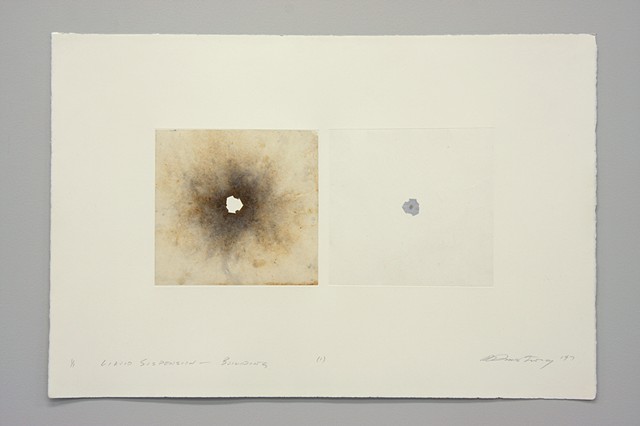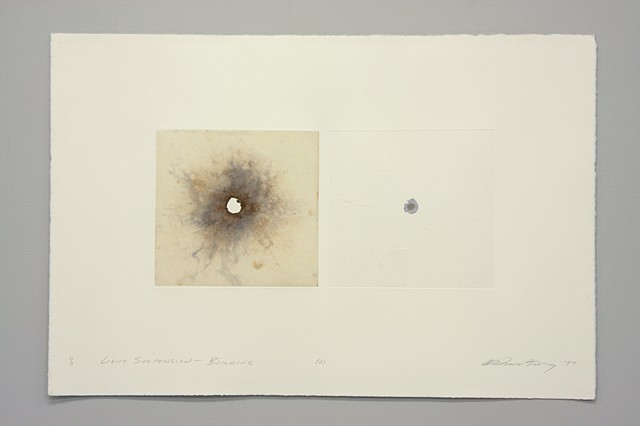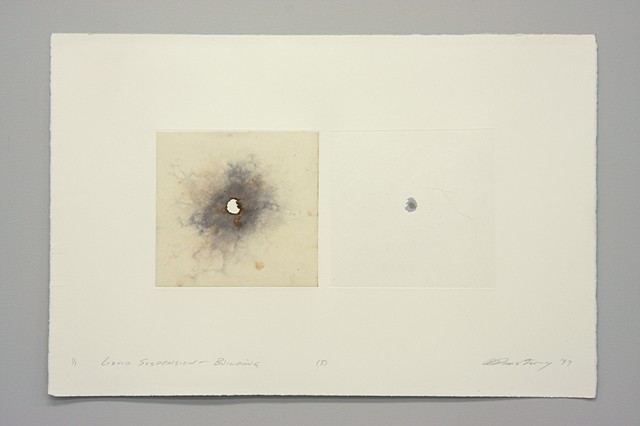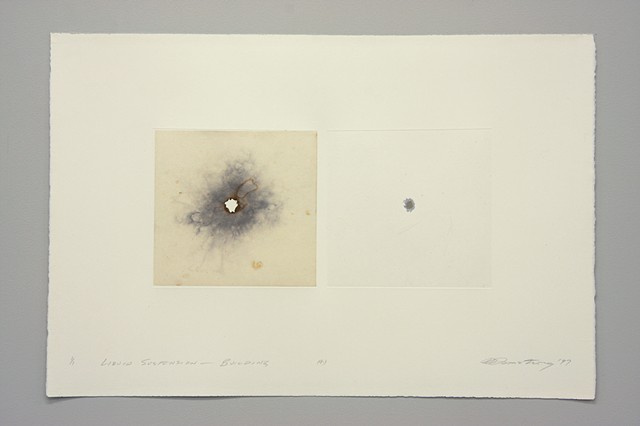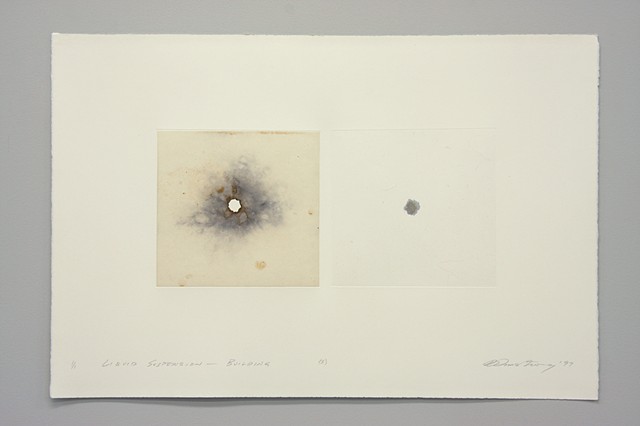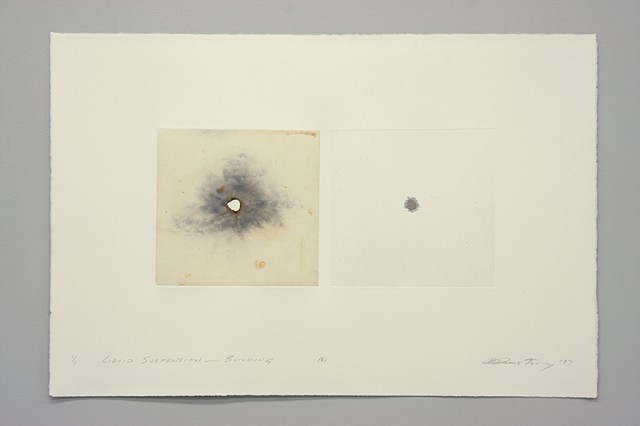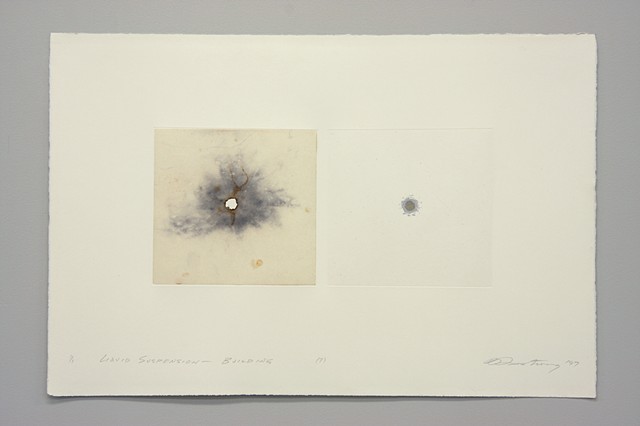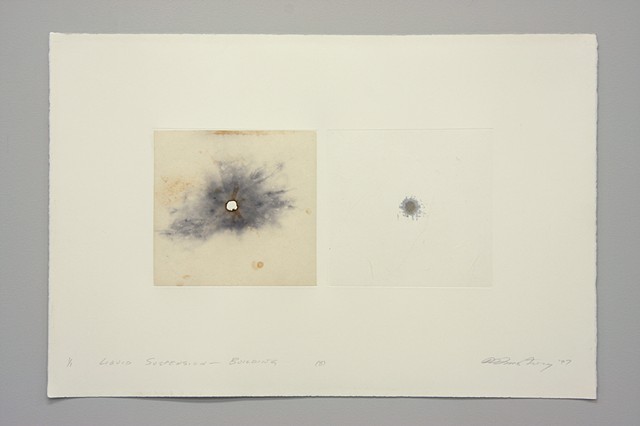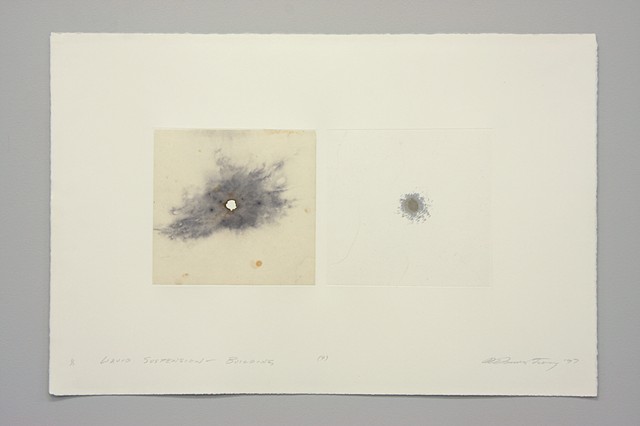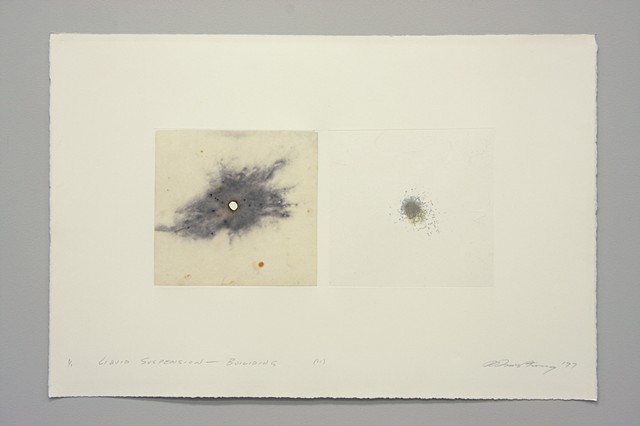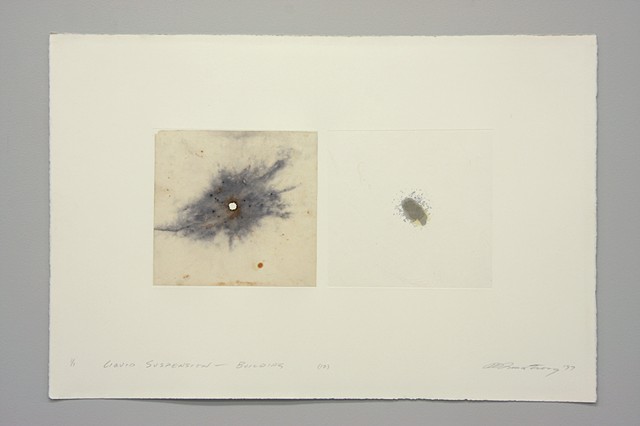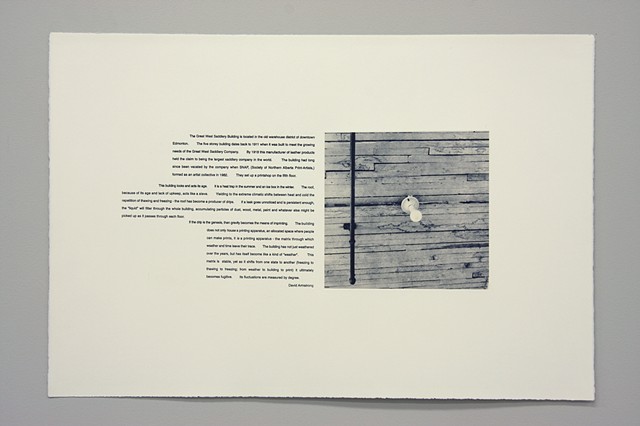Building, or: what do you do with a leaky roof after looking at it for a year?
A folio of 12 prints + title and colophon pages.
Each print in this folio is made up of a mirror-like left and a right hand panel of rice paper laminated to a backing rag paper. The image on the left hand side was generated in the winter of 1997 by placing a stack of 12 tissue-thin pieces of mulberry paper underneath a persistent drip coming from the roof of the building that the Society of Northern Alberta Print Artists print studio, located in Edmonton Alberta Canada, was housed. (SNAP had to deal with the roof leaking for years, and was a constant source of frustration for both renters and the board of directors). Over the period of a week during a snow thaw the leak continued to drip on the stack of rice paper, both staining, and puncturing a hole through all 12 layers. The stack was removed from the drip, separated and left to dry.
The image on the right hand panel involved a much less direct process. It was generated by taking the 12 sheets of stained/punctured rice paper into the darkroom and, with a flashlight as a light source and the hole as a kind of aperture opening, exposing the stack of paper to photo-sensitized lith film. The resulting numerous images, which ranged from a direct contact print to more refracted dispersed light stains, were chosen then exposed on to silkscreens and printed in layers. The printing order involved screening first onto the backing paper itself, then laminating (along with the left hand panel of stained paper at the same time) a semi transparent piece of rice paper on top, then screening another light stain image on top with the intent of having a kind of filtered image, on and under the surface of the paper.

